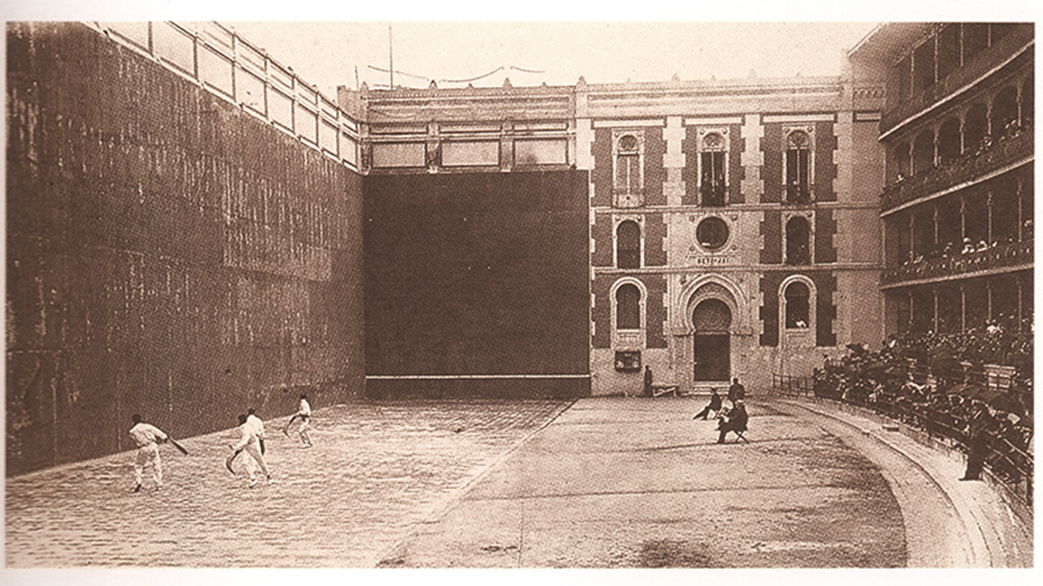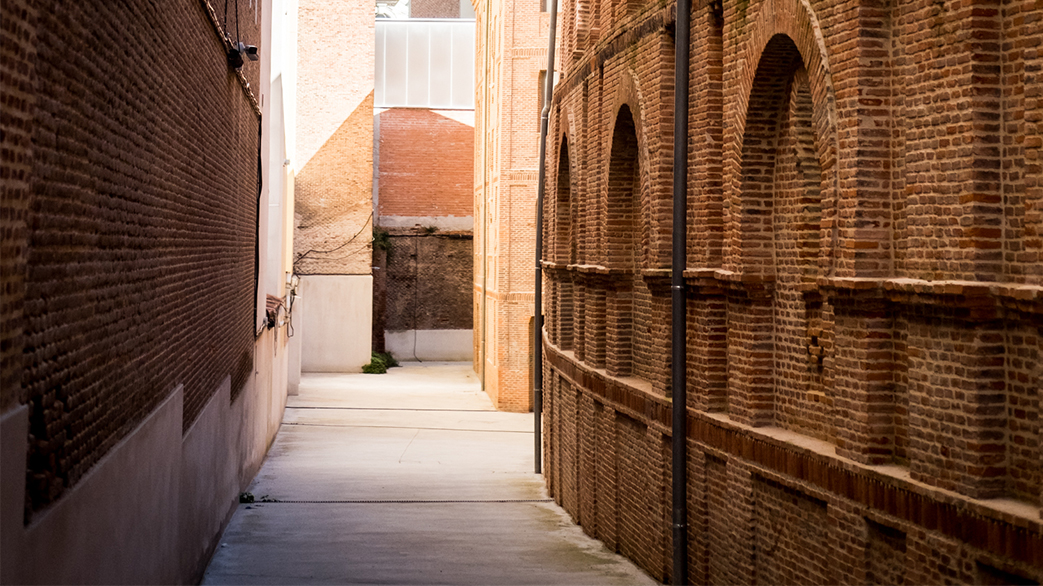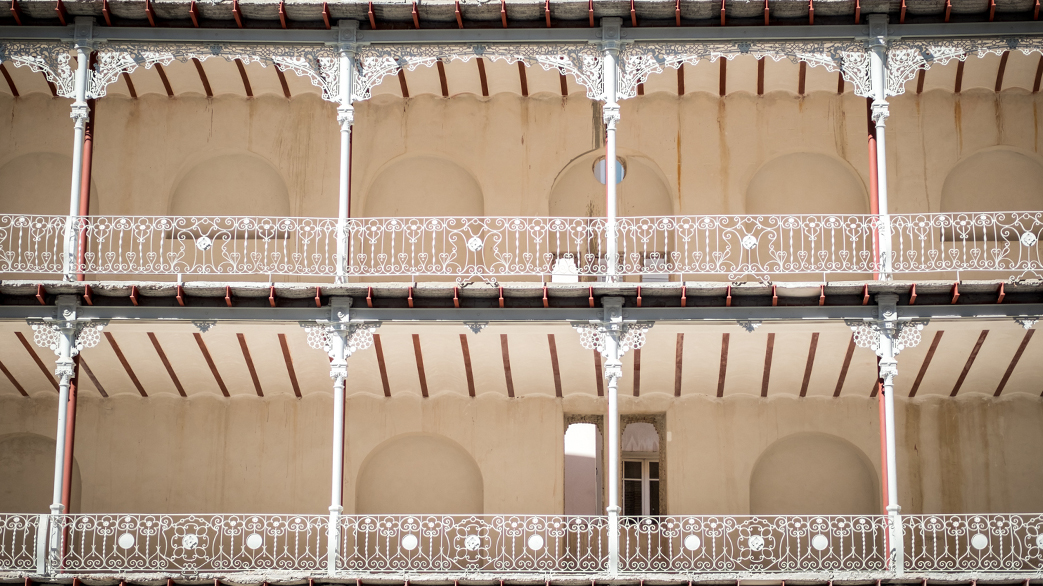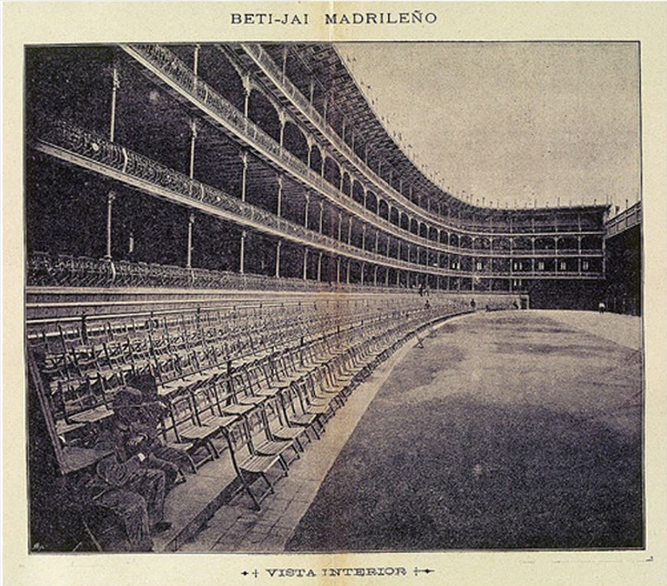Beti Jai Fronton

In the center of the Chamberí District hides the oldest fronton in Spain, and also the largest in Madrid.
If we zoom in on the map of Madrid, in the central Chamberí district we can see a singular building, with a semi-elliptical shape occupying the courtyard of the block at number 7 Marqués de Riscal Street.
It is the oldest fronton in Spain, and also the largest in Madrid.

This year the Madrid City Council has released free tickets to discover this architectural jewel little known by the people of Madrid. If you do not get tickets to visit it do not worry, in this article we tell you a little of the peculiar history of this project.
History of Beti Jai
At the end of the 19th century, the regent of Spain, Maria Christina of Habsburg moved her vacation spot to San Sebastian. It was there where she became fond of this game in the Basque Country, the “pelota vasca”, and besides her, all the aristocracy that traveled with her. It was a game that had gone from the rural world to the professional level, very associated with big bets.
A game that had moved from the rural world to the professional level, closely associated with high stakes.
That is why, at this time, the businessman José Arana decided to build the Beti Jai, “always a party” in Esukera, hiring the architect Joaquín de Rucoba for the design and construction, which was inaugurated in 1984. During this period, up to 7 frontons were built in Madrid, but none of them was as big as the Beti Jai, with a capacity of up to 4,000 people.

However, as quickly as the sport rose, it declined within a few years, in 1919. One could say that it died of success; it is difficult to maintain a sport with daily matches where spectators bet a lot of money.
It is then when a series of very different uses of this building began, which have been maintained to the present day. From Harley Davidson workshop, to the Aeronautics Test Center of the engineer Leonardo Torres Quevedo, as equestrian exhibition centers, military schools or a place to hold political rallies. During the Civil War it was used as a police station and jail, and later it was used as a rehearsal place for Falangist bands.
After the end of the war, the bleachers were walled up, transforming the building into offices, and over the years it would become a garage, housing a large warehouse where the court used to be, and the high-rise building as housing in the form of a corrala.

Over the years the fronton was abandoned, and although during its last years there were serious risks of being demolished by various owners, in 2009, the Madrid City Council (promoted by the platform “Salvemos el Frontón Beti-Jai de Madrid”) expropriated the building from its owners, for 30 million euros and it was declared an Asset of Cultural Interest by the Community.
Architectural Style
The Beti Jai Fronton is located on a plot of 3609 m² with a building of 10,800 m². The construction can be divided into two very different parts, facing Marqués de Riscal Street we find a neoclassical style building, very characteristic of the buildings that were being built at the same time in the Chamberí District. However, the grandstand building, with a semi-elliptical floor plan of 5 floors, has a neo-Mujedar style, built with brick masonry and the characteristic blind arches, which can be seen very well from the alley that once gave access to the cafeteria at the back of the plot.
The Beti Jai Fronton is located on a plot of 3609 m² with a building of 10,800 m².

When we access the impressive void inside, where the playing field was located, we can see that the bleachers are made up of columns and iron railings, a very characteristic style in the 19th century.
Today, in parallel to this iron architecture, painted white, we can distinguish a substructure of reddish tone, both columns and curved beams, which serve to reinforce the entire building.

This restoration, currently at a standstill, takes place after the call for an ideas competition organized by the Madrid City Council together with the Official College of Architects of Madrid, to find out what could be done in this spectacular building.
You can see the winning proposals here
However, as it is a building listed as an Asset of Cultural Interest, the TSJM overturned the roofing project proposed by the winners of the competition.
It is currently in the restoration phase of the building, and the intention is to finish the works in order to have a municipal building to host cultural events such as fairs, concerts or summer cinemas. Hopefully that moment will come soon and we will be able to share all these events in Sparker.

